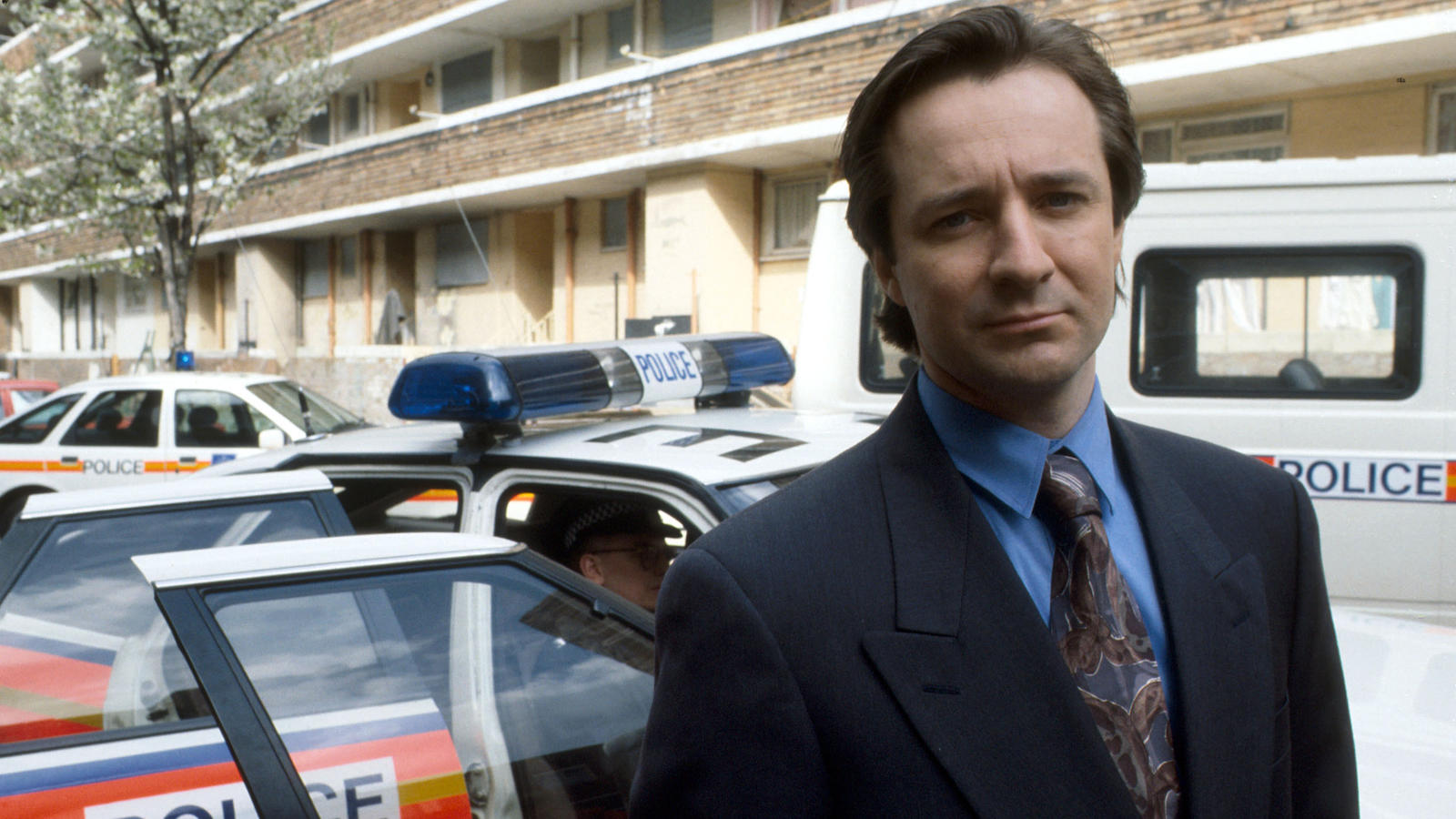On 2nd May 2021, on a Sunday night, the BBC serial Line of Duty (2012-) ended its 6th series in a finale which was watched by an average of 12.8 million viewers a record for the World Productions-produced BBC police corruption drama. In one of those odd coincidences thrown up by svod, while watching the unfolding drama of Hastings (Adrian Dunbar), Arnott (Marin Compson) and Kate (Vicky McClure) on Line of Duty (see fig 1), it was also possible, on BBC iplayer, to catch up with another popular and prestigious police procedural drama from the1990s, Between the Lines (1992-4). A comparison between the two, both of which I hugely enjoy, provides a neat lesson in how television drama has changed in the intervening period.
One thing which Line of Duty shared with earlier dramas was the way in which it refused to adopt the streaming mode of delivery. It wasn’t possible to binge watch all the episodes in a sitting. Instead, the audience was teased with a weekly episode which generated what amounted to mass hysteria over the final episode. According to the BBC, the finale was the most watched episode of any drama since the early 2000s, with a 56.2% share of the UK’s TV audience, according to overnight figures.
While anyone interested in contemporary television must already know something about Line of Duty, Between the Lines may not be familiar. It ran for three series and centred on the work and life of Detective Superintendent Tony Clark (Neil Pearson) who works in the Complaints Investigation Bureau (CIB), of the Metropolitan Police. Along with his colleagues Harry Naylor (Tom Georgeson) and Maureen ‘Mo’ Connell (Siobhan Redmond) (see fig 2), he investigates suspicious circumstances and complaints against police behaviour. In parallel, Clark’s complicated love life (the series was nicknamed ‘Between the Sheets’) threw doubts on his own ability to act objectively. Tony Garnett was Executive producer and J C Wilsher was the creator and wrote the first, scenario-setting episodes. (A clip from an early episode can be found here)
So where might we see the main differences between (the most recent) Line of Duty and (the first series of) Between the Lines? Certainly, there is a difference between the hype of a very overt narrative style and a much more laid-back storyline development. With Line of Duty, the audience has become familiar with the mechanisms of the storytelling and part of the enjoyment lies in seeing the repetitions and differences in how they are used. Thus, particular devices such as interrogation scenes (see fig 3), action sequences and case briefings are ‘performed’ so that we can be dazzled by how they have been done this time as compared with similar functional devices in previous episodes and series. Line of Duty also relies on cliff hangers and twists to keep us involved; hermeneutic possibilities about surprises and clues can be endlessly explored in the week between episodes. And over its narrative arc, across the six series, hung the overall issue of corruption at the top which in the end boiled down to the bald question ‘Who is H’?
By contrast, Between the Lines almost ambled along. While there was one case which, as it turned out, crucially ran through the series, each episode began with Clark and his team being sent to work on a new case which involved collecting evidence, interrogating police colleagues, setting up ambushes, tracking down civilian witnesses (who may or may not be villains themselves) and resolving it (or not) by the end of the episode. These are not narrative devices but just humdrum events in the day-to-day life of the police just as action sequences take place in crowded London street and suburban pavements. The contrast in the use of interrogations is striking for instance. In Between the Lines, interrogations of the police suspects take place in the normal office or in a makeshift space elsewhere. An interrogation is not presented as a battle of wits and intelligence; the conversation moves along familiar lines, with questions generally receiving an entirely predictable ‘no comment’.
In part, this is a difference between the different modes or registers which the two series draw on. Between the Lines is immersed in the realism of the everyday with its grubby sets and recognisable London settings (see fig 4). Compromises and.accidental actions make taking a moral position tricky. Line of Duty, while seeking to be accurate about its use of police procedure and jargon, is also prone to melodramatic shifts in tone when moral decision between good and evil seem stark. The characters of AC12 are indeed flawed but sometimes they can seem rather smug, claiming the moral high ground a bit too readily.
A consequence of all this was that Between the Lines concealed its narrative arc (was this a term in 1990?) from view. Almost comically, the team seemed to regularly reach the end of the episode without having solved the case or brought justice for a complainant. This was reinforced by the rueful humour brought to the programme by Clark’s co-investigators. Whereas Steve Arnott and Kate reinforce Hasting’s rhetorical demands for action in the pursuit of corruption, the equally loyal Mo and Tony often bring Tony Clark down a peg or two, undermining his self-importance with a comment about his complicated personal life or his tendency to rush into things. It was only towards the end of series 1 that the failure to solve cases was explained and connected with the possibility of corruption at the top. This fact, which had all along been central to the story, emerged for the audience as it did for the characters, very slowly and rather sadly as their likeable boss was revealed as the villain in episode 13.
By contrast, the disappointment in Line of Duty’s ending was entirely predictable. Too much hype had been generated, the expectations that had been built up could never be fulfilled in an ending which inevitably closes down on the possibilities dreamt up by an audience which had been so compulsively seduced. I rather enjoyed the downbeat interrogation (see fig 5) in which the bumbling Ian Buckells (Nigel Boyle) was revealed as a rather less than all-controlling H but Jed Mecurio was forced to defend a rather downbeat ending. And, indeed, there were flaws which flowed from what had previously been so lauded. The car chases and deadly ambushes followed the choreography which had gone before, the new character Jo Davidson (Kelly Macdonald) repeated the rather stiff anxiety of Kate and Arnott while Hasting’s final speech about ethics and morality, woodenly delivered by Adrian Dunbar, was more rhetorical than convincing. As is the fate of high-concept drama, having revealed its dramatic workings, Line of Duty had a long way to fall while Between the Lines gave us a conclusion which seemed entirely in line with its own routinely dramatic world.
Christine Geraghty is Honorary Professorial Fellow at University of Glasgow. Her publications on television include a contribution to the 1981 BFI monograph on Coronation Street; Women and Soap Opera (Polity, 1991) and My Beautiful Laundrette (IB Tauris, 2004). Her BFI TV Classic on Bleak House was published in 2012 and she has continued to make a major contribution to Adaptation Studies. Most recently, she has published an essay on BAME casting in the 2010s in the journal, Adaptation . She is Book Reviews editor for Critical Studies in Television. Her essay on ‘Filming with words: British Cinema, literature and adaptation’ appears in Companion to British and Irish Cinema, John Hill (ed), Blackwell Wiley, 2019.










